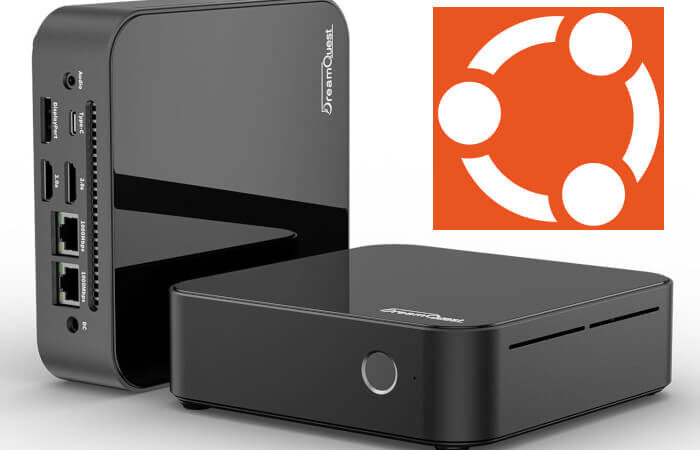This is a multi-part blog looking at a DreamQuest N100 Mini PC running Linux. The model we’re testing has an Intel N100 processor, 16GB of DDR4 RAM, and a 512GB M.2 SSD. It sounds like an inexpensive machine to run Linux.
At the heart of the DreamQuest PC is the Intel N100, a processor which has 4 cores, 4 threads (i.e. there’s no hyperthreading), and a maximum turbo frequency of 3.40 GHz. It’s a popular CPU in part because it’s low cost, it offers Skylake performance at a fraction of the power, it can take DDR4 or DDR5 RAM, and can drive three 4K displays at 60Hz refresh rate.
Many Mini PCs suffer from a lack if internal expandability. However, this machine is designed to be upgradable. There’s two M.2 2280 slots supporting both SATA and PCIe 3.0 SSD. And the RAM can be upgraded to 32GB. The 16GB RAM supplied with our machine is sufficient for most desktop uses, and is ample for file serving, media hosting, or running a home automation server. It should be sufficient for years to come.
The 16GB model is available from Amazon UK, Amazon US. These are not affiliate links. At the time of publication, the price for the 16GB machine is £199.99 / $159.99 (inclusive of a £40 / $40 voucher).
The machine comes with a Windows 11 Professional digital license. We only briefly tested the preinstalled Windows.. But other than that, we evaluated the machine mostly with Ubuntu 24.10 together with a few other popular Linux distributions.
Design
One of the most challenging parts of having a traditional desktop setup is finding space for the base unit, the monitor, and all the wired/wireless extras. Mini PCs take up minimal space. Some can be mounted at the back of a monitor, others will fit on even the smallest desks.
The diminutive DreamQuest has dimensions of 5.45 inches (length), 5.45 inches (width), and 1.45 inches (height). Other advantages of its tiny footprint are its portability as the PC is very lightweight, and it fits the aesthetic appeal of even the most minimalist designer.
It’s housed in a dark grey plastic case with an illuminated logo on the top which is quite stylish although there’s no option in the BIOS that lets us turn the illumination off or change its colour.
We’re testing a second version of the N100 machine which sports a vastly improved cooling system. The design of the case is good. There’s sufficient ventilation slots to help the components cool helped by the fact that the N100 processor has a low 6W TDP.
One side of the machine hosts 4 USB 3.2 Type-A ports which should be sufficient for most users. There’s also a TF card slot.

The rear of the machine hosts 2 HDMI ports, a DisplayPort, an audio jack, as well as 2 RJ45 1GbE ports, the latter may be useful if you’re planning on using the machine as a low cost server, as it lets you have completely separate network segments.

The machine came with the appropriate plug for our country (UK).
The machine is very quiet under light load. With heavy load, the fan becomes audible but it’s not intrusive.
Next page: Page 2 – Specifications
Pages in this article:
Page 1 – Introduction
Page 2 – Specifications
Complete list of articles in this series:
| DreamQuest N100 Mini PC | |
|---|---|
| Part 1 | Introduction to the series with an interrogation of the system |
| Part 2 | Benchmarking the DreamQuest N100 Mini PC |
| Part 3 | Power Consumption and Running Costs |
